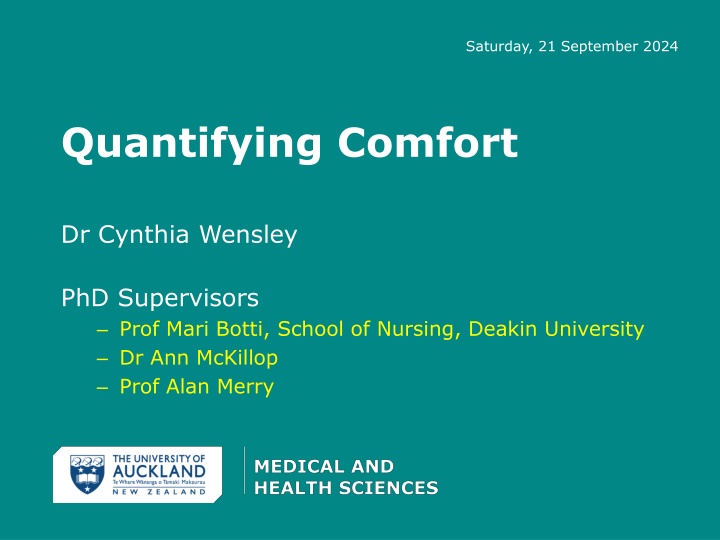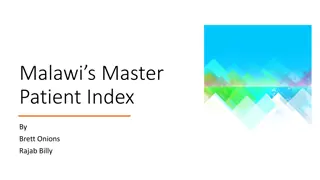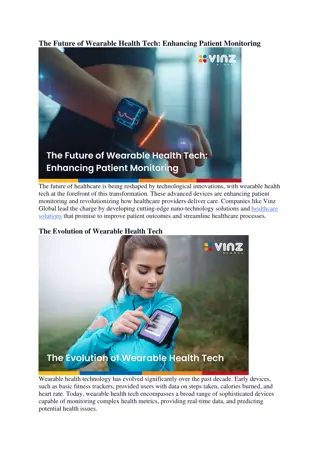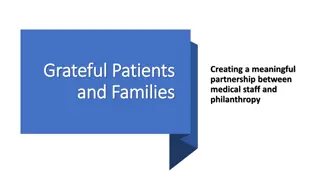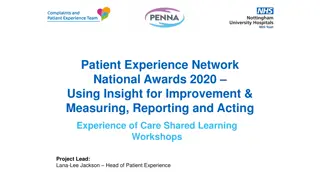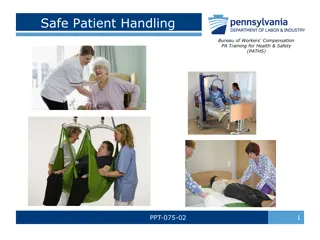Quantifying Comfort in Healthcare: A Framework for Enhancing Patient Experience
Patient experience in healthcare is greatly influenced by the level of comfort provided during care. However, the concept of comfort has been poorly defined in practice. This study by Dr. Cynthia Wensley and team aims to quantify and enhance comfort in healthcare settings. Through a two-stage qualitative descriptive design, they identify the multiple influences on patients' experience of comfort. The research emphasizes the importance of measuring unwarranted variability in comfort-related care, recognizing missed care, fundamental care, and compassionate care. The study proposes clinically relevant metrics to improve patient experience and staff well-being in healthcare environments.
Download Presentation

Please find below an Image/Link to download the presentation.
The content on the website is provided AS IS for your information and personal use only. It may not be sold, licensed, or shared on other websites without obtaining consent from the author.If you encounter any issues during the download, it is possible that the publisher has removed the file from their server.
You are allowed to download the files provided on this website for personal or commercial use, subject to the condition that they are used lawfully. All files are the property of their respective owners.
The content on the website is provided AS IS for your information and personal use only. It may not be sold, licensed, or shared on other websites without obtaining consent from the author.
E N D
Presentation Transcript
Saturday, 21 September 2024 Quantifying Comfort Dr Cynthia Wensley PhD Supervisors Prof Mari Botti, School of Nursing, Deakin University Dr Ann McKillop Prof Alan Merry
Background key literature Patient experience is core to quality healthcare Comfort is crucial to a good patient experience but poorly defined for practice and quality improvement Two-stage qualitative descriptive design1, 2 defined: Comfort (the state) encompassing strengthening, safe, acceptance attributes, feeling valued and cared for Influencing factors (processes of care, some structure) Now need clinically relevant metrics, i.e. patients perspectives, multiple influences; concept is broader than comfort cares for terminally ill, or absence of pain. Literature Person-centred care organisations; 2012 NICE Patient Experience Guideline; Institute of Medicine To Err is Human ; Institute for Healthcare Improvement (Triple Aim); NZ version of Triple Aim Health Quality and Safety Commission; Hippocrates; Nurse Theorists; Mid Staffordshire NHS Foundation Trust Inquiry (2010); Gerteis Through the Patient Eyes 1. Wensley C, Botti M, McKillop A, Merry AF. A framework of comfort for practice: An integrative review identifying the multiple influences on patients' experience of comfort in healthcare settings. Int J Qual Health Care. 2017;29(2):151-62. 62 studies (48 qualitative from 15 countries involving a range of settings; 14 theoretical including 6 concept analyses) 2. Wensley C, Botti M, McKillop A, Merry AF. Maximising comfort - how do patients describe the care that matters? A two-stage qualitative descriptive study to develop a quality improvement framework for comfort-related care Submitted to BMJ Open
Methods Underpinned by conceptual understanding of Comfort - patients perspectives1 Healthcare service that maximises comfort - ten themes with operational definitions1 Use methods for instrument design Factor analysis Population inpatients 1. Wensley C, Botti M, McKillop A, Merry AF. Maximising comfort - how do patients describe the care that matters? A two- stage qualitative descriptive study to develop a quality improvement framework for comfort-related care
Impact / Implications Measure unwarranted variability in comfort-related care Missed care, fundamental care, compassionate care (the recognition of and response to the distress and suffering of others) More sensitive and complete measure of patient experience A tool that recognises comfort related care as work , which healthcare leaders have accountability to promote, monitor and address omissions; comfort as Always Event and distress an error Measures that preserves the notion of comforting as a science and art (move away from checklist, standardised approach) Can quantify the claim that comfort improves clinical outcomes ?Population heath in vulnerable groups from engagement with staff and service, willingness to disclose, to seek help, participating in care Indicator of a healthy workplace Staff able to provide the care they wish to provide (burnout vs reward, job satisfaction); leadership accountability here also
Questions for the audience 1. 2. 3. 4. Too soon more concept exploration? Research Grant or Findathesis Funding? Team?
